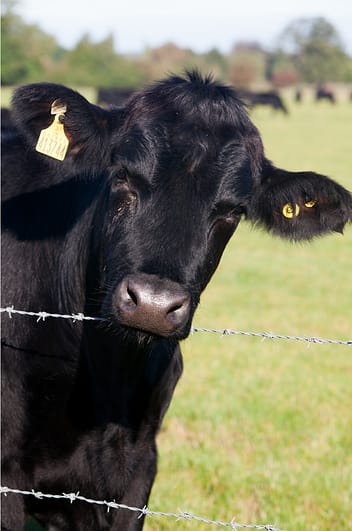Secret Variables to Take Into Consideration When Picking Livestock Risk Protection (LRP) Insurance
When reviewing options for Animals Risk Security (LRP) insurance, several vital elements necessitate careful factor to consider to ensure efficient threat management in the farming sector. Selecting the appropriate coverage choices customized to your specific livestock procedure is extremely important, as is understanding just how premium expenses associate with the degree of protection provided.
Coverage Options
When thinking about Livestock Risk Protection (LRP) insurance, it is important to understand the various insurance coverage alternatives readily available to minimize threats in the farming industry. Animals Danger Security (LRP) insurance policy supplies various insurance coverage choices customized to meet the diverse requirements of livestock manufacturers.
An additional crucial coverage alternative is the endorsement period, which identifies the size of time the insurance coverage is in impact. Producers can pick the endorsement period that ideal fits their production cycle and market problems. Furthermore, coverage degrees and rates differ based upon the sort of livestock being guaranteed, providing manufacturers the versatility to customize their insurance policy plans according to their details requirements.
Recognizing the different insurance coverage choices readily available under Livestock Threat Security (LRP) insurance policy is crucial for manufacturers to make informed decisions that properly safeguard their animals operations from market unpredictabilities.
Costs Expenses

Animals Danger Security (LRP) insurance provides essential insurance coverage choices tailored to mitigate threats in the farming industry, with a significant facet to think about being the calculation and framework of premium expenses. These include the kind and number of livestock being insured, the insurance coverage level picked, the present market rates, historic price information, and the length of the coverage duration.
Insurance firms examine historical information on animals rates and production expenses to identify a proper premium that mirrors the degree of risk included. It is necessary for animals manufacturers to thoroughly examine premium prices and insurance coverage options to ensure they are sufficiently secured versus prospective monetary losses due to negative market conditions or unanticipated occasions.
Qualified Animals
The resolution of eligible livestock for Animals Danger Protection (LRP) insurance policy protection includes mindful factor to consider of particular criteria and features. Animals types that are typically qualified for LRP insurance coverage include feeder livestock, fed cattle, lambs, and swine.
Feeder livestock, as an example, are commonly qualified for LRP coverage if they fall within defined weight ranges. Fed livestock may additionally be eligible, but they should meet particular weight and high quality grade needs. Swine eligible for protection usually consist of market weight animals meant for massacre. Lambs are one more category of animals that can be considered for LRP insurance policy, with aspects such as weight and age playing an essential duty in determining their qualification.
Before selecting LRP insurance coverage for animals, manufacturers ought to thoroughly review the qualification criteria described by the insurance policy service provider to ensure their pets fulfill the essential requirements for protection.
Policy Versatility
Plan adaptability in Livestock Risk Protection (LRP) insurance coverage enables manufacturers to customize insurance coverage to match their specific requirements and run the risk of administration approaches. This adaptability encourages animals manufacturers to tailor their insurance plan based on elements such as the type of livestock they own, market conditions, and individual risk tolerance degrees. One crucial aspect of policy versatility in LRP insurance coverage is the capability to select protection levels that align with the manufacturer's economic objectives and take the chance of direct exposure. Producers can select coverage degrees that shield them versus prospective losses because of changes in livestock prices, guaranteeing they are properly guaranteed without paying too much for unnecessary coverage. In addition, LRP insurance coverage uses versatility in plan period, enabling producers to pick protection periods that ideal fit their manufacturing cycles and advertising timelines. By offering personalized choices, LRP insurance review makes it possible for manufacturers to efficiently handle their danger direct exposure while protecting their animals operations against unanticipated market volatility.
Cases Process
Upon experiencing a loss or damages, producers can start the cases procedure for their Livestock Danger Security (LRP) insurance policy by promptly calling their insurance policy company. It is critical for producers to report the loss asap to speed up the insurance claims procedure. When connecting to the insurance company, manufacturers will certainly require to give thorough information about the event, including the date, nature of the loss, and any type of appropriate paperwork such as vet records or market costs.

After the assessment is full, the insurance copyright will decide regarding the insurance claim and connect the outcome to the producer. The manufacturer will get compensation according to the terms of their Animals Threat Protection (LRP) insurance policy if the insurance claim is accepted. It is important for producers to be acquainted with the cases procedure to ensure a smooth experience in the occasion of a loss

Final Thought
To conclude, when choosing Livestock Risk Protection (LRP) insurance, it is important to consider coverage options, premium prices, eligible animals, policy adaptability, and the claims procedure. These vital variables will certainly assist make sure that ranchers and farmers are sufficiently safeguarded against possible dangers and losses connected with their livestock procedures. Making a notified decision based upon these considerations can inevitably bring about much better financial protection and assurance for livestock manufacturers.
Livestock Threat Security (LRP) insurance supplies various coverage choices tailored to satisfy the diverse demands of livestock manufacturers.The decision of eligible animals for Livestock Danger Protection (LRP) insurance policy coverage involves careful factor to consider of certain criteria and features.Policy adaptability in Livestock Threat Protection (LRP) insurance policy allows manufacturers to customize protection to match their particular demands and risk administration strategies.Upon experiencing a loss or damage, manufacturers can initiate the insurance claims procedure for their home Livestock Danger Get More Information Security (LRP) insurance by quickly calling their insurance company.In verdict, when selecting Livestock Threat Protection (LRP) insurance, it is necessary to consider coverage choices, premium costs, qualified animals, plan flexibility, and the insurance claims procedure.